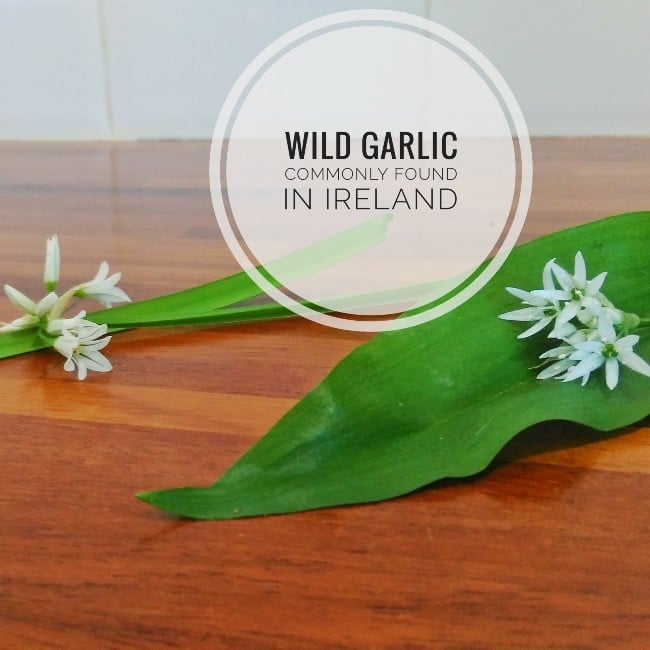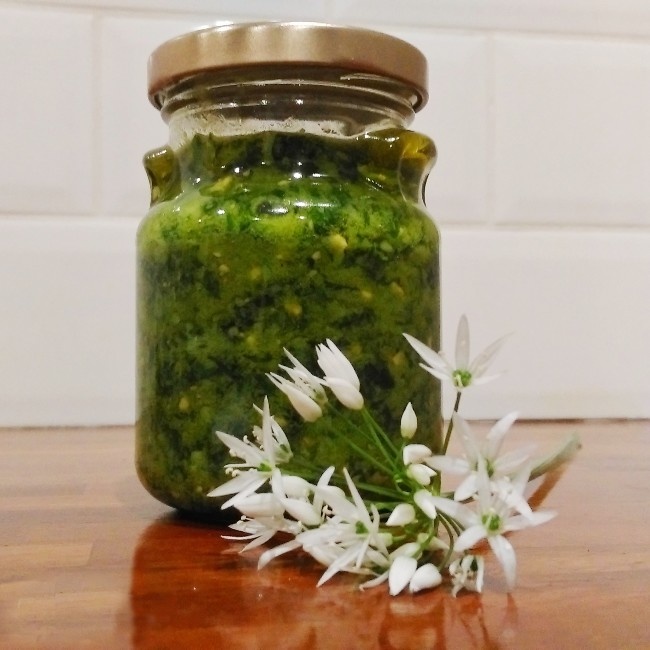Wild Garlic on Your Walk
- Posted on
- By Cindy Doyle

Foraging for wild foods - such as garlic - while you're out getting some fresh air is not only educational and fun, but will help you use up all the stock-piled pasta you have in that cupboard!
Forage & Make: Wild Garlic Pesto
With people increasingly looking to get outside to escape the COVID-19 Cabin Fever and also the hassle of going to the shops – even if you haven’t already been asked to restrict your movements – here’s something positive you can do alone or with your children that will give you fresh air, fresh food and fresh hope. It’s also a good one for using up all that stock-piled pasta!!
I love this time of year. Everything bursting into life brings with it a renewed vigour and lifts everyone’s spirits!
Many of the other plants in season at this time of year are edible too, so keep an eye out for other updates.
What does it look like?
Your most likely encounter with wild garlic will probably be with either the ‘Three Cornered Garlic’, which flowers first and is in flower right now, or ‘Ramsons Garlic’ which flowers soon (both pictured below). It doesn’t matter whether it’s in flower or not, you can use the leaves anyway.
 Three cornered garlic on the left, Ramsons garlic on the right.
Three cornered garlic on the left, Ramsons garlic on the right.
Although the three cornered variety looks a little like a tall snowdrop, and before it flowers, the Ramsons leaves can be mistaken for other plants, its scent is a dead giveaway! If in doubt, all you have to do is crush a leaf between your fingers and smell! It’s a great, safe plant to start foraging with. It’s also a prolific plant, so once you are using the rule of thirds* and not picking in a nature reserve or national park, we are unlikely to impact negatively on this plant.
Both types of wild garlic grow abundantly in many parts of the country. However, I tend to use Ramsons garlic for making garlic butter, mashing into potatoes and making pesto, simply because its broad leaf makes it easier to gather more of it weight wise.
Where will I find it?
In woodlands and along verges when you are out for your socially-distanced sanity walk! Think carefully when choosing a spot to pick from - try to avoid areas dog walkers let their pets off lead....
How much do I need?
A basket is ideal for gathering.
How much you need depends on what you want to do. For the recipe below, you’ll need about 50g of wild garlic. That equates to a large bowlful as you can see from the picture. You’ll make one large jar of pesto with that. I would suggest starting this way. You can always go back for more if your family have licked the jar clean in seconds!
Be gentle when gathering the leaves, a basket is ideal, but a large shopping bag works just as well.

Wild Garlic Pesto Recipe:
Ingredients
50g wild garlic
25g nuts – pine, cashews, hazelnuts, pistachios etc.
40g of grated, hard, mature cheese. Parmigiano Reggiano or similar.
200ml of olive oil (extra virgin).
Sea salt and coarse black pepper to season.
Method
- Wash your jar and lid in warm soapy water (or in the dishwasher), sterilise them by boiling in water for 10 minutes. If you are making a large batch, consider the oven sterilising method. It will keep for a few weeks in sterilised jars. If it’s going to be eaten immediately, you can skip the sterilising.
- Using a salad spinner, wash your wild garlic leaves as you would any salad leaf.
- Grate your cheese.
- Blitz the nuts and half the oil in the food processor.
- Add cheese, blitz again.
- Add the wild garlic and blitz.
- Season to taste, adding in the rest of the oil and more if necessary to gain your desired consistency and blitz again.
- Eat and enjoy!!
The great thing about making pesto is that it’s so easy to adapt it to your own taste.
Have fun finding your favourite nut, don’t just stick with the traditional pine nut. Try others. My favourite is roasted, salted cashews! And, I tend to throw in a bit more than the suggested 25g because I love the nutty flavour and gritty texture it gives.
Similarly with the cheese and even the oil! Some recipes suggest using a rapeseed oil instead. We have some lovely home-grown rapeseed oils in Ireland. I’ve tried making pesto with it and yes, it’s subtle enough to use, but personally I prefer olive oil. It’s also more likely to be in my cupboard, but do use whatever is in yours during these unusual times!!
And don't forget - before you prepare food of any kind for others - wash your hands!

Originally posted on my personal blog GoWild.ie

